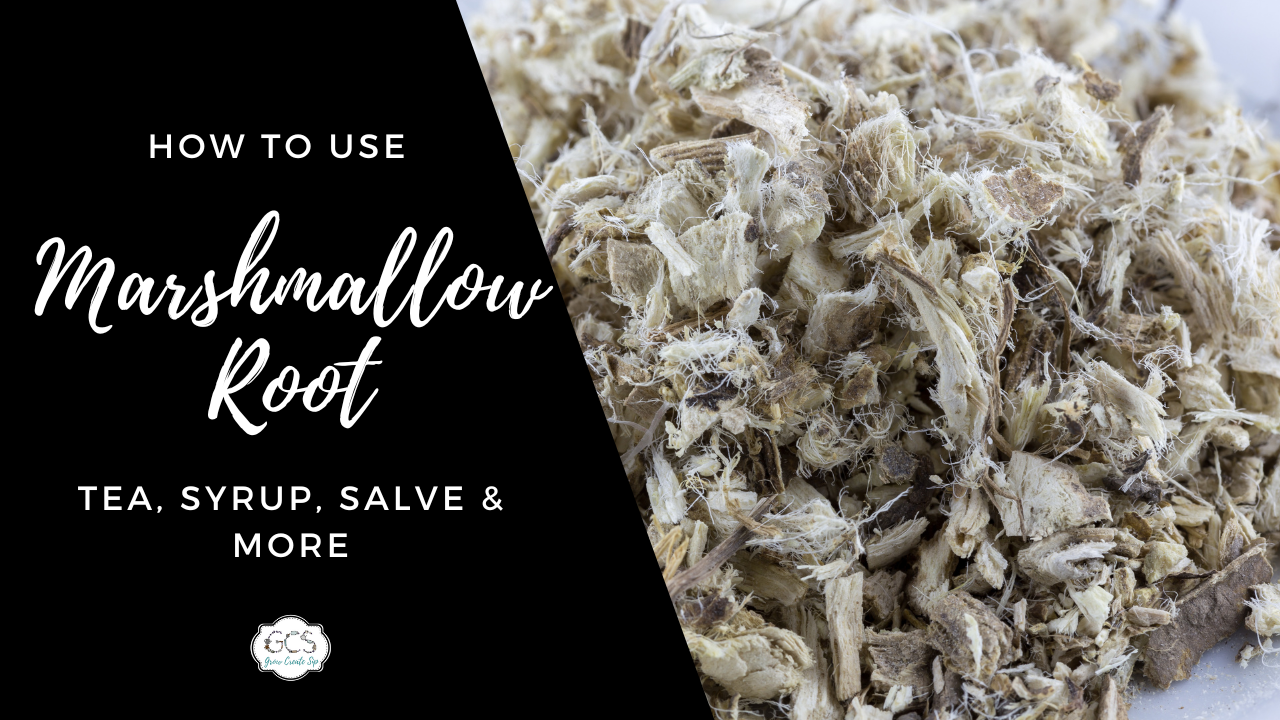How to Grow Roses from Cuttings (Edible Roses)
Aug 23, 2021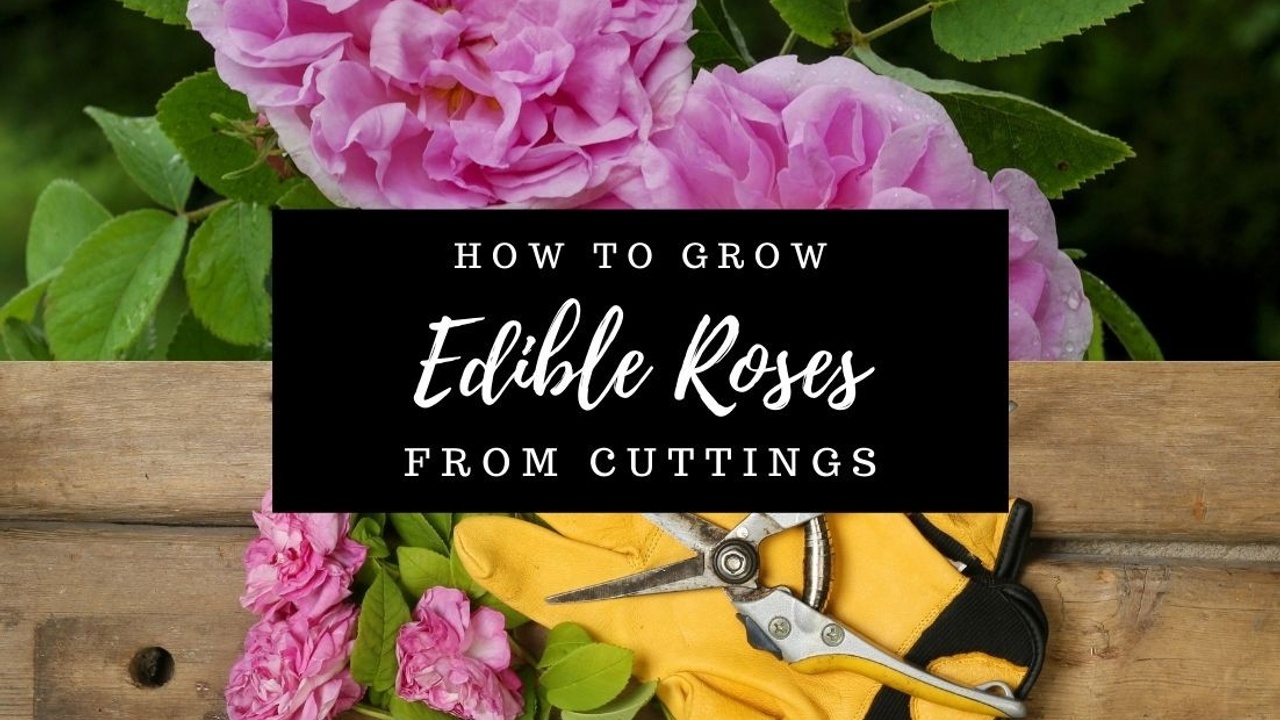
What if I told you that you could increase your rose garden for free? Or even start your rose garden for free? Also, that the free rose garden you grow can produce edible roses that will add high amounts of vitamin c to your diet? Wait, are roses edible? Yup, they sure are!
Ok, ok, I hear ya, your saying, “Yes! Please!” Let’s dive into how you can wrangle up your own rose garden for free while at the same time producing edible roses. On top of that, you get all the health benefits of rose petals as well as the health benefits of rose hips. That sounds like a win, win to me! It all starts with how to grow roses, especially using the method of growing roses from cuttings.
Garden Roses
There are many different types of roses and the type of rose that you decide to grow will affect the type of rose petals and rose hips that you end up with. The hips and petals are the edible parts of the rose plant. While all roses are edible there are certain ones that will work better than others. Let’s take a look at a couple of the different types of garden roses that are best for growing edible roses.
Rosa Damascena- Also known as the Damask Rose. Damask roses are great to grow for edible rose petals. The Damask rose is an older variety of rose that has a very sweet scent to it, it isn’t too overpowering. The petals are usually pink or light red in color. It is also known as the Bulgarian Rose, Otto Rose, and Rose of Castille. This rose originally came from Iran and is commonly grown now in Bulgaria, Turkey, and India although it can be grown all over the world.
Rosa Canina- Also known as the Dog Rose. The rosa canina takes the cake for the best of rose plants for growing hips. The Dog Rose is the most used plant for rose hips for all the major herb suppliers in the US including Starwest Botanicals and Frontier Co-op.
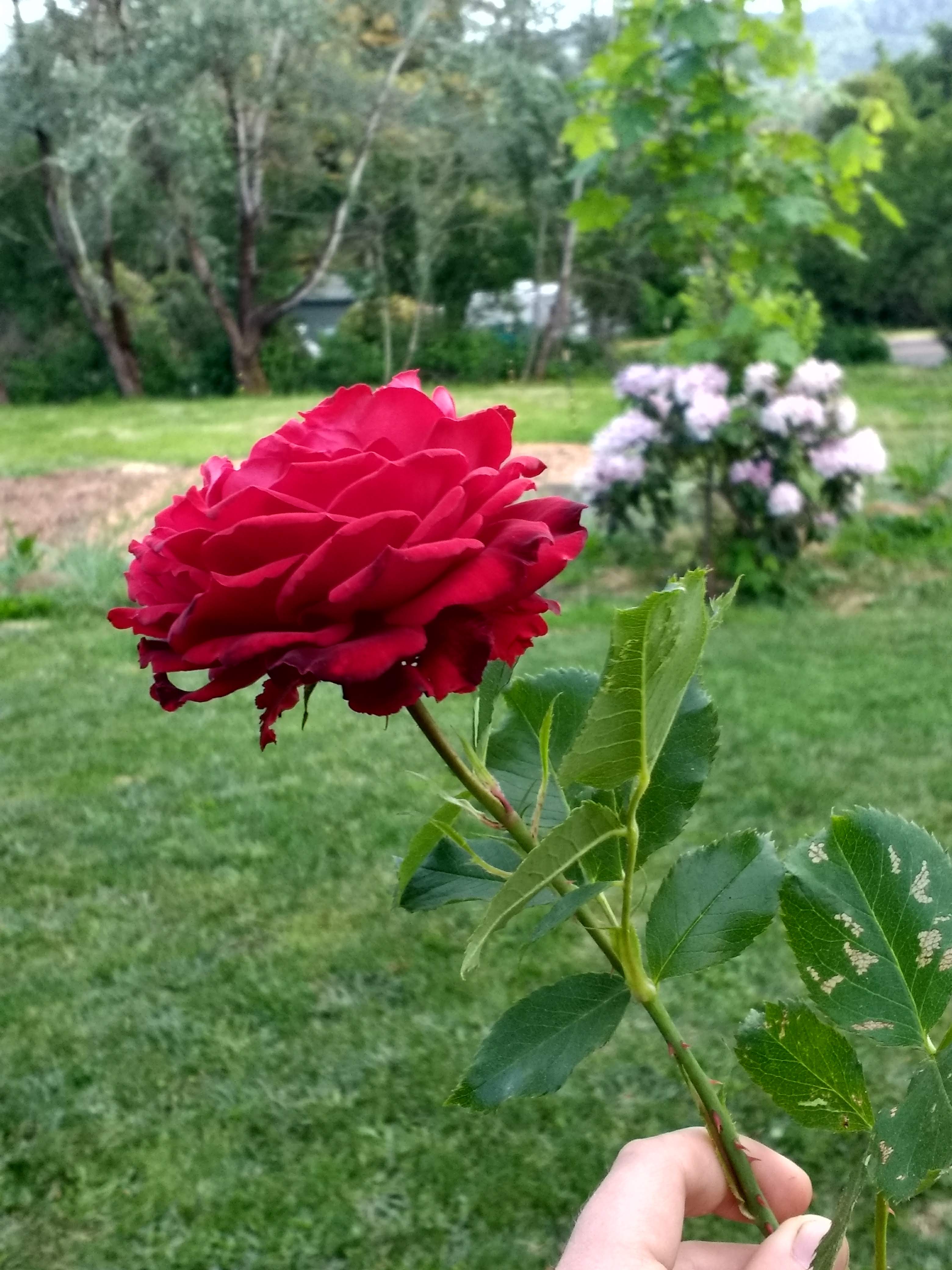
Growing Roses
There are so many benefits of roses from the benefits of rose hips (the fruits) to the benefits of rose petals. First, we have to get some roses growing before we can enjoy those benefits! There are many ways that you can get your rose garden started:
- Purchase a rose plant at a nursery or home improvement store (making sure they are not sprayed)
- Ordering a bare root rose plant from an online supplier
- Rehoming a rose plant from a friend or family member that no longer wants the rose plant
- Checking online marketplaces like Facebook or Craigslist for people looking to remove rose plants
- Grow a rose plant from a cutting
- Grow a rose plant from seed
There are a few care tips to also keep in mind once you get your rose garden going. Powdery mildew can be an issue for some rose plants. This is a fungus that comes from spores in the air that settle on your rose plant.
You will know if this happens if you see a powder on the leaves or the buds of your rose bush. If this happens make sure you cut off all the parts that have the mildew on them and put them in the garbage (don’t compost it or it will spread!). Keep the soil around your rose plant moist, well-composted, and mulched to prevent a further issue with powdery mildew.
The black spot! No, I’m not talking about the thing on the pirate’s hand in Pirates of the Caribbean. Black spot with regard to roses is just what it sounds like. Black spots appear on your rose leaves which is also caused by a fungus.
Spraying your roses with diluted neem oil can help keep the black spot at bay and help your rose plant be even healthier. Do not spray the neem directly on petals or rose hips you intend to consume as neem oil should not be digested. It’s best to spray prior to the rose petals coming on and way before the rose hips arrive in the fall.
Another option for dealing with the black spots is to use diluted hydrogen peroxide. Again don’t spray this on anything you intend on consuming internally and it would be best applied to rose plants prior to the flowering or fruiting seasons.
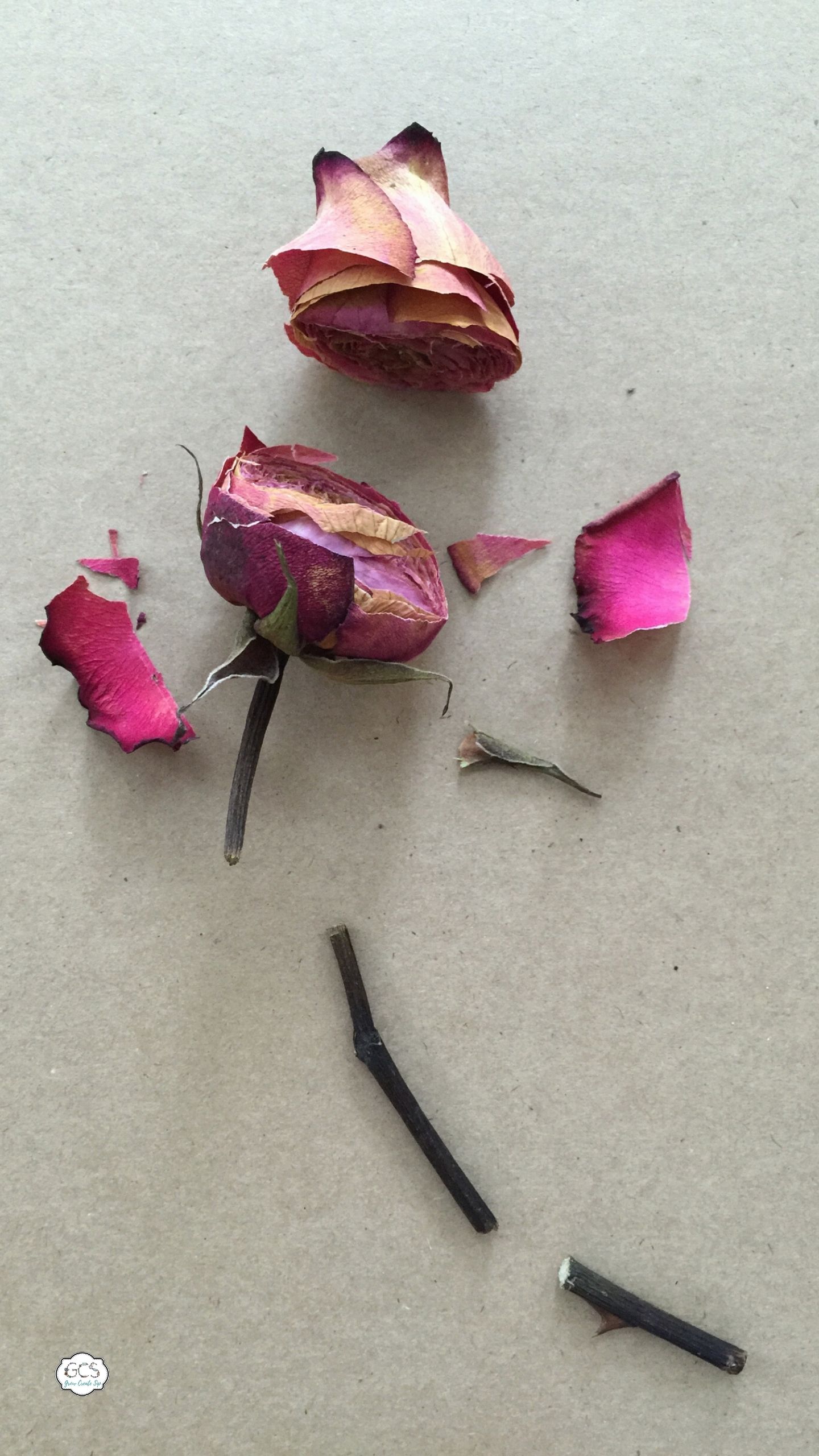
How to Grow Roses from Cuttings
The Farmer (that’s my husband) has done some reading about rose rustling. Sort of a modern-day cowboy going around snipping up roses from here and there to create a garden of his own. While we don’t condone stealing by any means the idea has sort of a romantic feel for it and would be a great hobby if given permission to snip heirloom roses from this place and that.
Taking your own cuttings from roses doesn’t have to be complicated and can be done in a few simple steps:
- During the late summer take cuttings from new plant growth (the current year) and find a stem that is fairly straight.
- Trim about 14-16 inches off just below a leaf.
- After you have your rose stem, trim the top off at about 10 inches just above a top leaf.
- Remove any leaves between the top leaves/stems. Be careful not to strip the bark of the stem and removing the spikes is optional.
- Using a planting pot, fill with high-quality compost and place the stem in about 4-6 inches of soil. No need to worry about a planting hole, just gently push the stem in. Roses like moist but drained soil.
- Rooting hormone is optional and may or may not affect the outcome of growing your rose from a cutting. Organic rooting hormone is available. Keep your cutting moist.
- Keep the roots out of extreme weather but keep them warm. Roses will take 2 or so months to start forming decent roots.
- Once the roses have rooted make sure to upgrade them to larger pots as they grow.

How to Grow Roses from Seeds
Growing roses from cuttings is probably one of the easiest ways to grow roses but growing roses by seed is also possible. When harvesting rose hips there are plenty of rose seeds inside to give growing roses by seed a try!
- The fall after the first frost is the best time to gather rose hips for rose seeds. Gently tugging at the rose hip will be the best way to get the rose hip off of the rose plant. A plastic bag works great for collecting them as they can be a little messy.
- To gather rose seeds scoop seeds from the inside of rose hips. Grab more details on rose hips here.
- Rose seeds need to be cold stratified before planting (no need to soak the seeds), grab the how-to tutorial on cold stratifying in the Herbal Studio and Communi-tea
- Make planting holes in planting trays (no more than 3-4 inches in depth) and place rose hip seeds in the holes with good compost or seed starting soil.
- Plant rose seeds ¼ inch deep in the soil
- Soil should be moist but not soaked, make sure there is plenty of sunlight or artificial light from a grow light
- Keep at about 70F° degrees
- The average germination rate is 20-30% taking 4-16 weeks
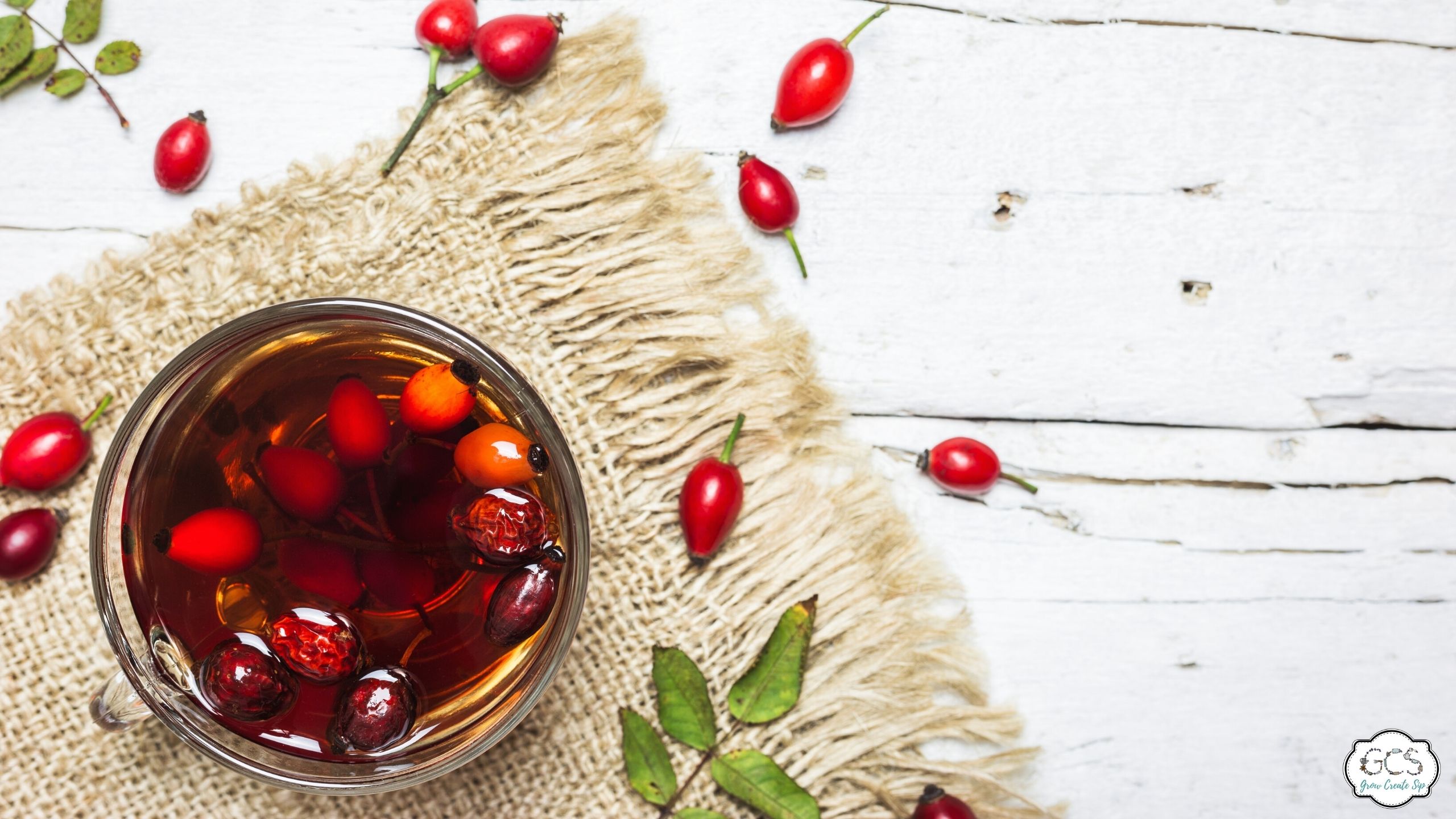
Are Roses Edible?
All roses are edible using both the flower petals as well as the fruit, also known as rose hips. Both would be pretty and tasty on ice cream. There are so many ways to eat rose petals or hips (or drink them in rose water)! If you are going to use rose hips make sure to remove the seeds first. There are a couple of considerations though:
- Have your roses been sprayed with chemicals?
- What flavor and/or scent does a specific rose petal have?
Now you never want to consume rose petals that have been sprayed with chemicals. Many chemicals have a half-life and so the chemicals are never going to go away even if you haven’t sprayed the rose plant yourself in years.
Toxins from the spray build up in our liver and we are working to build a healthy lifestyle with healthy rose petal tea as part of that. It would be like 2 steps forward and 1 step back to have sprayed rose petals for health benefits.
While you can technically use any rose petals for rose petal tea you want to consider how strong the scent and flavor of the specific rose that you have has when you go to drink it. Some roses are better used for perfumes or oils than they are for teas and other edible rose petal treats. Rose petals can be dried quickly on paper towels.
Some roses, such as modern hybrid roses don’t produce rose hips, so if you are wanting to use the rose hips you will need to make sure you have an heirloom rose that produces rosehips such as the dog rose bush.
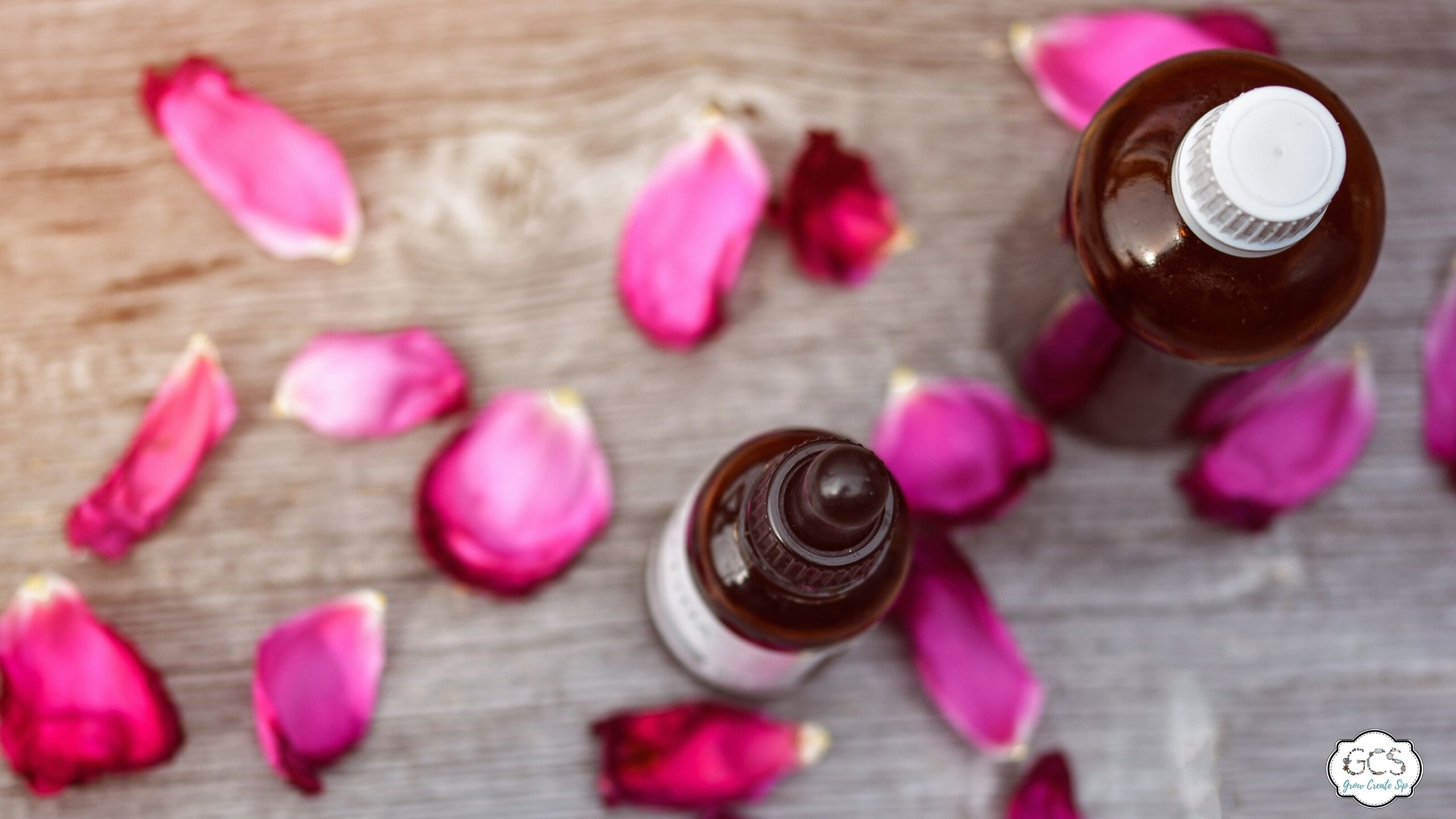
Before we start:
This herbal information is just that, information. This blog post and I DO NOT INTEND to treat, cure, or diagnose any disease or illness. This is for informational, educational and entertainment purposes only. Please consult a physician before using herbs medicinally.
This post also contains affiliate links throughout. Translation: We get a little kick back for sharing certain products, at no additional cost to you, should you choose to purchase said items. And - thank you for supporting our farm and family! Read the full disclaimer here.
Rose Oil Benefits
Roses are great for so many things from edible petals to edible rose hips but they also make excellent rose oil. When we adopted our daughter from Bulgaria the airport was full of rose oil as they grow many roses in Bulgaria.
Rose oil has some wonderful benefits as well, including:
- Reducing Stress/Anxiety
- Fighting Depression
- Reducing Pain
- Antibacterial Qualities
- Reducing Menstrual Pain
- Promoting Hair Growth
- Calming effects that can aide in lowering blood pressure
- Drops of rose oil used in skin care can hydrating the skin
Rose oil is extremely strong so make sure that you use it diluted with a carrier oil like apricot oil and check a small patch of skin first to make sure that you don’t have a reaction to it. Rose oil should only be used externally.
While it is not quite fall here on the farm, I already have plans on which roses we are going to be growing from cuttings. I love the abundance that God provides and how we can propagate so many plants for free. It’s inspiring to see how much we can actually grow on our own!
It is also inspiring to know we have roses with such high-quality vitamin c at our fingertips. In addition that makes them so good to have on hand during cold and flu season!
Are you ready to put those homegrown edible roses to work? Get started blending your own teas with our free tea blending workshop. If you are wanting to dive deeper into roses including an in-depth printable on the giant list of medicinal benefits of roses, along with harvesting details as well as flavor pairings, make sure to check out our library of herbal monographs in our Herbal Studio & Communi-tea.
I’d love to know! Have you grown your own roses from cuttings yet? Do you have friends and neighbors that would let you rustle up some rose cuttings from their own rose bushes? Let me know in the comments below!
Related Posts:
- How to Preserve Flowers for Tea
- 6 Tips on How to Grow an Herbal Tea Garden
- Growing and Using Peppermint for Medicine
- Growing Herbs in Pots (Perennial Herbs)
- Best Food Dehydrator for Dehydrating Herbs
- Best Ways for Storing Dried Herbs
- 10 Herbs to Grow for Tea
- DIY Simple Syrup (Using Flowers)










